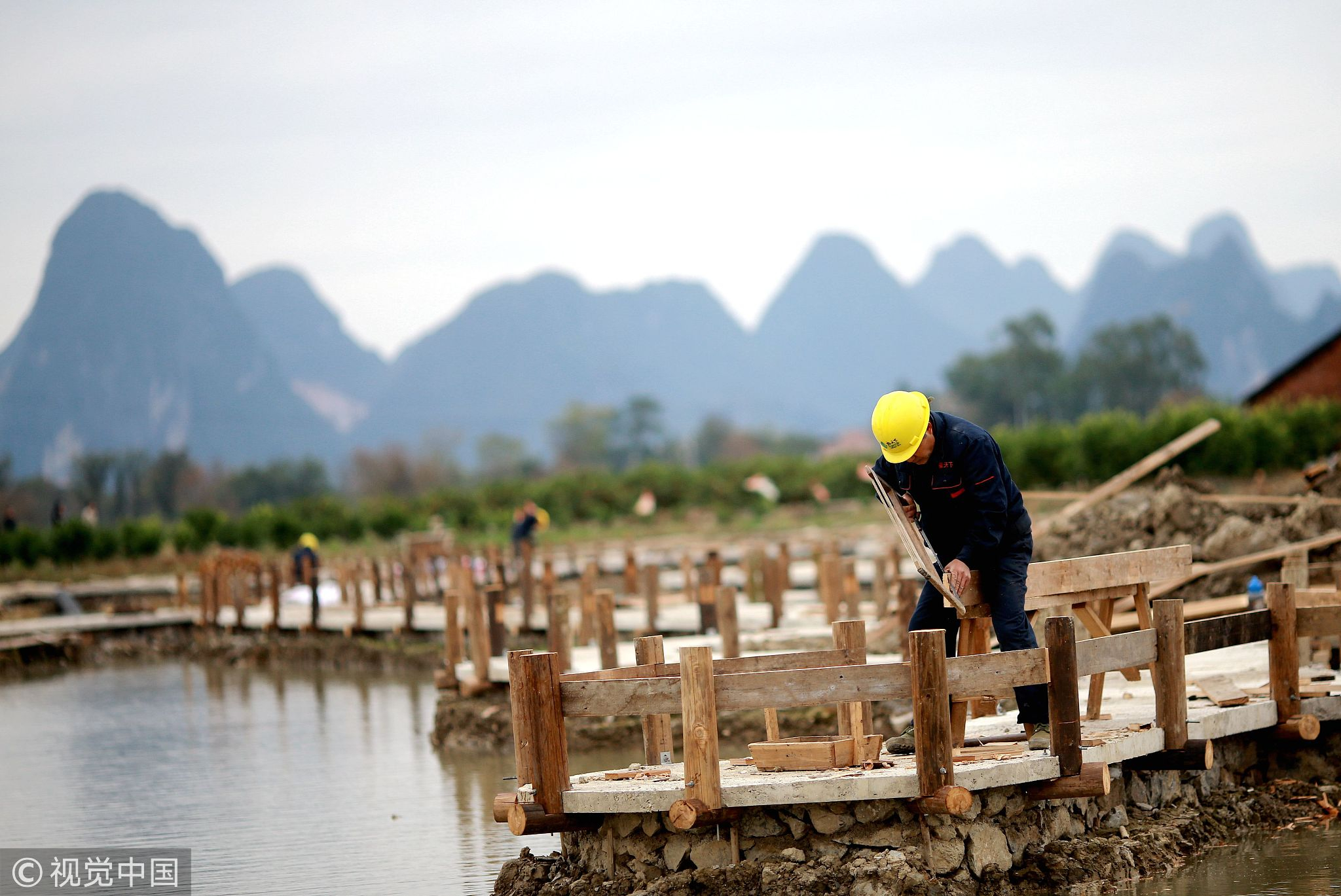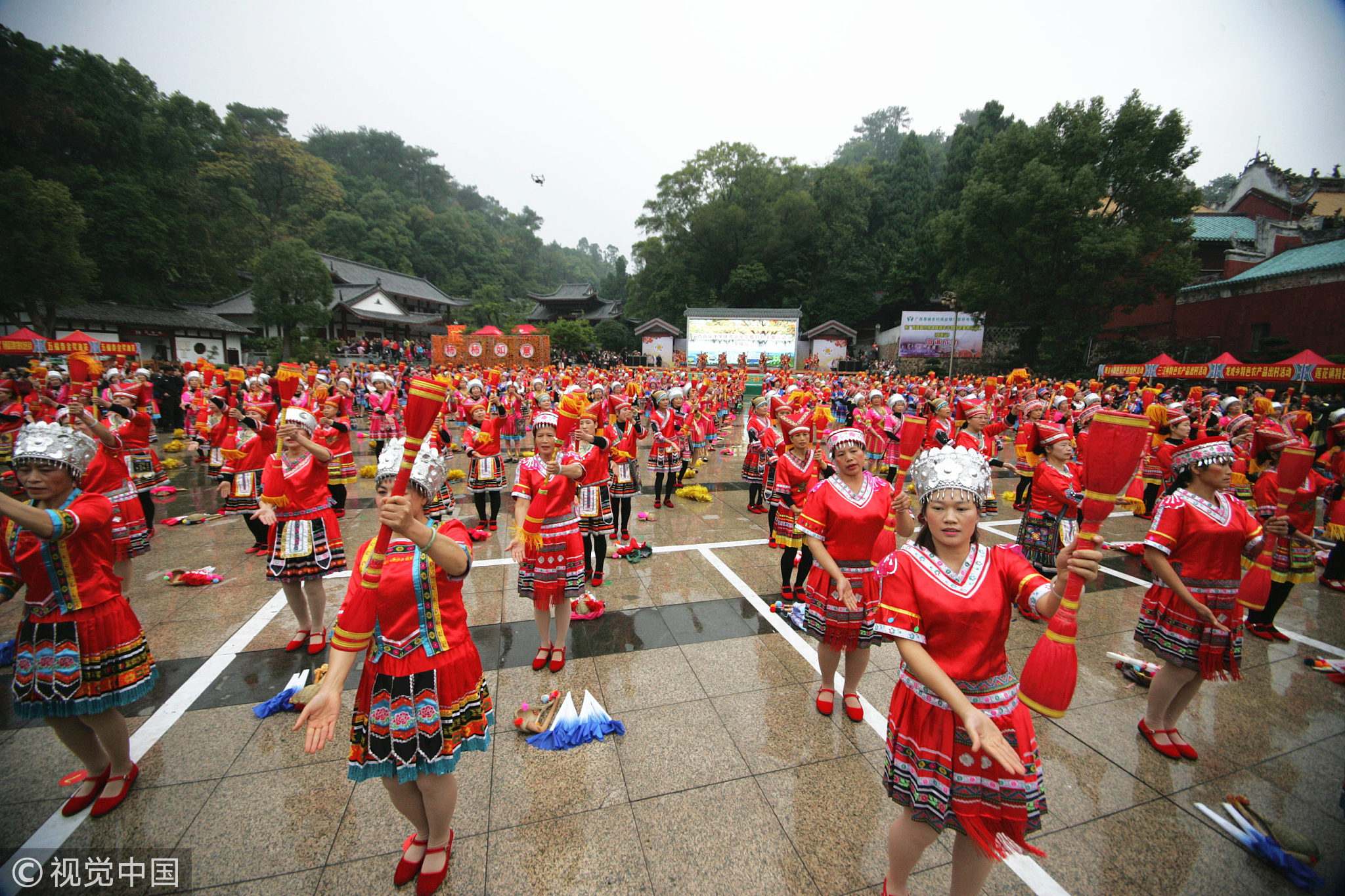
Opinions
20:04, 09-Dec-2018
Opinion: BRI offers S China's Guangxi greater development opportunities
Updated
19:48, 12-Dec-2018
Tang Qifang

Editor's note: Tang Qifang is an associate research fellow at the China Institute of International Studies. The article reflects the author's opinion, and not necessarily the views of CGTN.
Located in the southern part of the country, China's Guangxi Zhuang Autonomous Region borders Vietnam and the Beibu Gulf. With its proximity to southeast Asia and the South China Sea, Guangxi has been an important gateway for China's foreign exchanges since ancient times.
In recent years, the Belt and Road Initiative (BRI) has offered Guangxi greater opportunities for development, and allowed it to take full advantage of its unique geographical location and to play a more active role in the local economic development and China's opening to the outside world.

A worker is fixing the handrail in Yongfu Country, south China's Guangxi Zhuang Autonomous Region, December 9, 2018./VCG Photo
A worker is fixing the handrail in Yongfu Country, south China's Guangxi Zhuang Autonomous Region, December 9, 2018./VCG Photo
I will illustrate this point in three ways. First of all, the BRI has enabled the autonomous region to play a bigger role in boosting regional connectivity as it links the BRI's sea and the road routes.
The South China Sea-Pacific Passage and the China-Indochina Peninsula Economic Corridor represent the maritime and overland connections between China and the ASEAN countries, which are also two important parts of the BRI.
Guangxi is situated where these two connections intersect. Currently, it is actively promoting the development of the Nanning-Singapore economic corridor and aims to build a large overland passage from the southwest and south China to the ASEAN countries. At the same time, it is also planning to build “dry ports” in order to put an efficient logistics network that can easily reach the ASEAN in place.
Moreover, with the China-Singapore Connectivity initiative as its core mission, Guangxi has been focusing on building the Beibu Gulf regional international shipping center and developing a new overland passage that goes from Urumqi in the north, passes through Nanjing and reaches the Indochina Peninsula in the south.
The construction of the shipping center and the rail links will greatly facilitate trade between Guangxi and the countries along the routes and turn the autonomous region into a crucial spot linking the "Belt" with the "Road".
Second, the BRI has made Guangxi an important trade platform between China and ASEAN, further promoting commercial ties between China and the ASEAN countries.

Local people are celebrating the 60th anniversary of the establishment of the Guangxi Zhuang Autonomous Region in Guilin, December 1. VCG Photo
Local people are celebrating the 60th anniversary of the establishment of the Guangxi Zhuang Autonomous Region in Guilin, December 1. VCG Photo
The China-ASEAN Expo and the China-ASEAN Business and Investment Summit are two international events jointly hosted by China and the 10 ASEAN countries. So far 15 such events have been held and they have witnessed the signing of a series of important documents, including the Nanning Declaration, leading to a large number of major projects, such as China and Malaysia's “Two Countries, Twin Park" plan.
At present, based on the China-ASEAN business platform, Guangxi is also building other platforms including a service platform to upgrade the China-ASEAN Free Trade Zone, a public platform for multi-field exchanges between China and ASEAN Community of Shared Future, and a core platform for Maritime Silk Road cooperation in the 21st century.
Third, with the BRI, personnel and cultural exchanges between Guangxi and its neighboring countries have kept increasing, fostering stronger ties between China and ASEAN.
In addition to infrastructure and trade links, “people-to-people connections” have also an important part of the BRI. Five of ASEAN menber states have set up their consulate generals in Nanning, Guangxi's capital city. They are Vietnam, Thailand, Cambodia, Laos and Myanmar, with Malaysia's soon to be completed.
The autonomous region has also set up scholarships specifically for students from ASEAN countries. Today, Guangx has the largest number of ASEAN students in China, which accounts for nearly 20 percent. Besides, China and ASEAN have witnessed the establishment of 37 pairs of sister cities.
China-ASEAN Cultural Exchange Center, China-ASEAN Youth Training Base, China-ASEAN Youth Federation, and other cultural exchange mechanisms have all be established in Nanning. Guangxi has become an important bridge for cultural exchanges between China and ASEAN, laying a solid foundation for its participation in the construction of the BRI with ASEAN as its focus.
(If you want to contribute and have specific expertise, contact us at opinions@cgtn.com)

SITEMAP
Copyright © 2018 CGTN. Beijing ICP prepared NO.16065310-3
Copyright © 2018 CGTN. Beijing ICP prepared NO.16065310-3